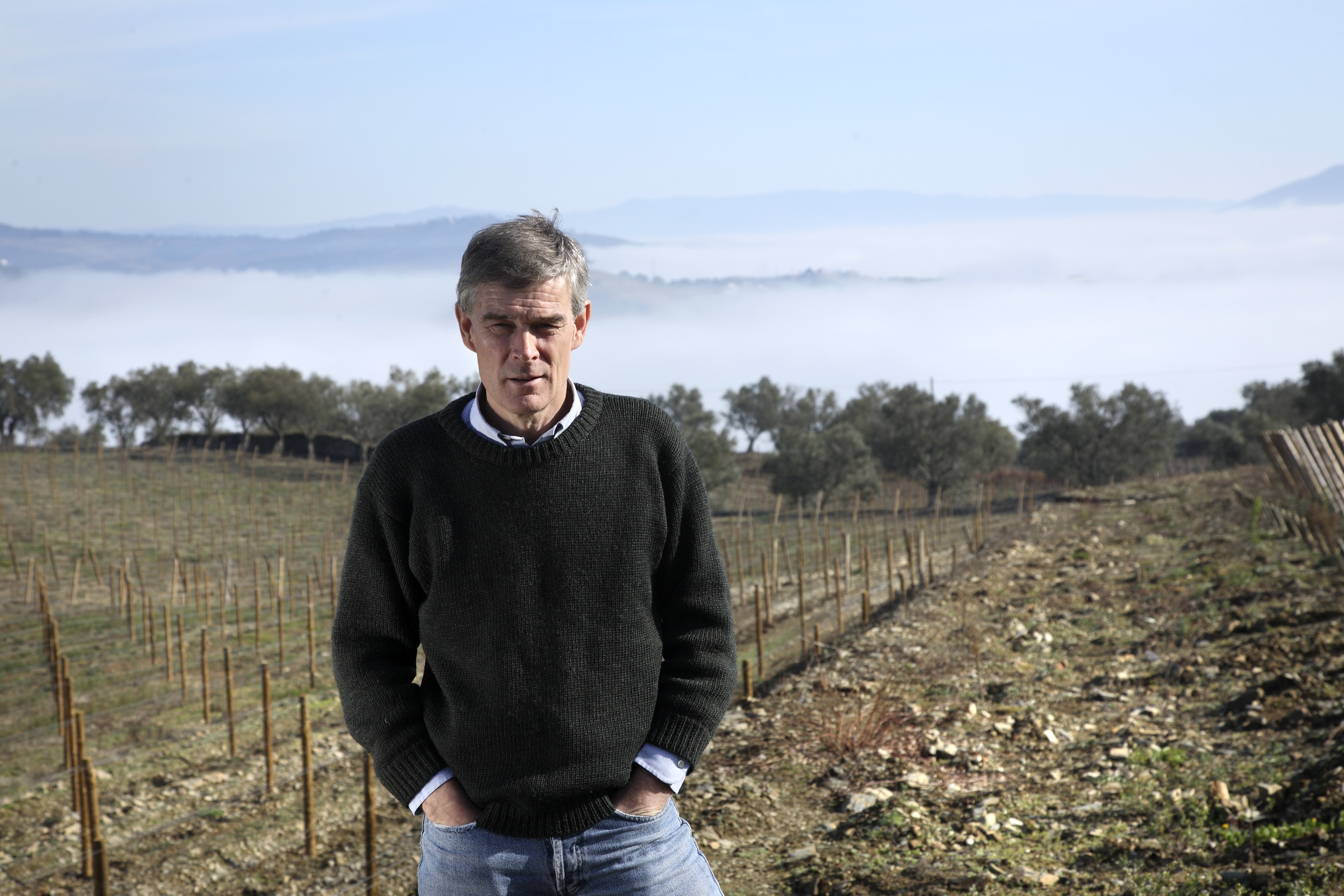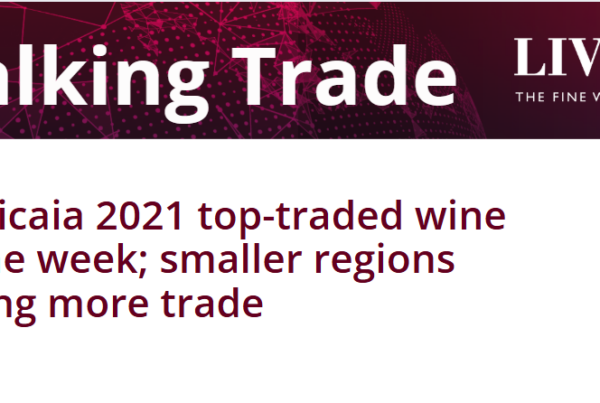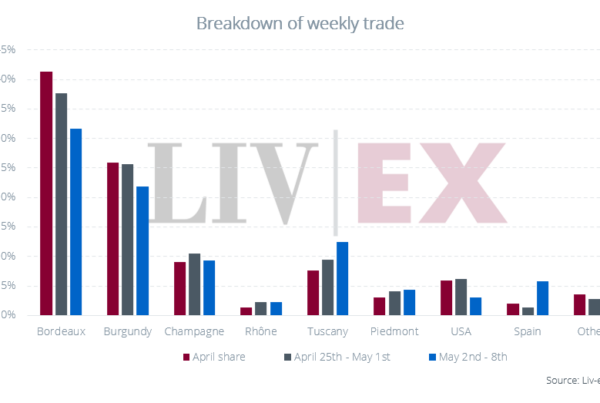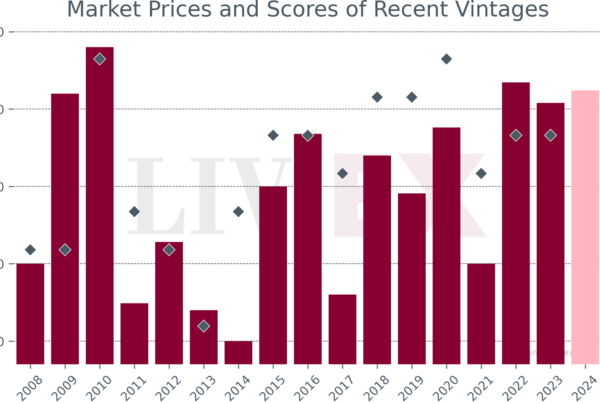
Paul Symington is one of the most influential figures in the Port industry. After his recent announcement that he will be stepping down as Chairman and Joint Managing Director of his family’s Port business, Symington Family Estates, at the end of the year, Liv-ex Director Anthony Maxwell caught up with him to find out more about his career, future plans, Port and the Douro.
Were you always destined to run the family business?
Yes, I was. As the oldest male son in our family branch, it was clear that I would be expected to join from an early age. There was a certain inevitability about it, which I never questioned. I am glad I never did.
When did you start to actively participate in the business?
I had studied at university in the UK and went back to Portugal in late 1978, four years after the turmoil of the Carnation Revolution.
How did the revolution impact Portuguese wine production?
The country had gone from far right, authoritarian dictatorship, to far left. There was a very real threat in the chaotic years after 1974. Many families in the south had their land taken away. It was nationalised with no compensation. Cork trees were cut too young and tractors were wrecked. We thought we might lose everything we had after over 100 years in Portugal. When Mario Soares was elected Prime Minister in 1976, he gradually brought Portugal back into a Western democratic system.
Did this influence your decision to go back?
I knew there were shifting sands in the Douro, but the pull was far too strong. The vineyards are where I grew up.
Did you have anything else drawing you elsewhere?
I would have got involved with other things in the UK. I had studied there, had friends and got married. But the Douro is too special for me to sever that link. It was a question of timing rather than not going back.
What do you enjoy the most about running the family business?
Working with my father and my uncles and maintaining a strong family tradition. I have also very much enjoyed working with my cousins in the last 20 years. We have managed to pull in the same direction, which has been very satisfying.
It must also be quite challenging…
It is challenging. There is no guarantee that people will respect each other or have the same vision. The example of a few other family wine businesses falling apart was a strong lesson for us that it was worth sticking together.
How did you manage to keep together as a family?
We all feel that the Douro is very special. If we were working in another business, not wine, somewhere in a building or factory in the suburbs of some dull European town, I do not think we would have stayed together.
There is a pride in our family history too. Our great grandfather, Andrew James Symington, came to Portugal in 1882 and married a woman whose family had been in Port since 1652 – she was half Portuguese, half English. When we recently redid our cellars and opened them to the public, we stuck a big family tree up on the wall. It was partly to show the tourists, but also a powerful message to my family. It reminds us that we have survived through ups and downs, and that we should all try to keep this show on the road.
As the leader of the business, how do you feel it is your responsibility to preserve it for future generations?
I feel a strong responsibility to keep the family business healthy and to pass it on in really good shape. I would never say it is my business though. Back in the 20s, my grandfather, who was the eldest and the major shareholder at the time, divided his shares equally with his two younger brothers. I think that has led to a very good mindset in the family. There are three branches of our family and we each own a third of the business. None of us claims it is theirs, we say it is ours.
What have been the biggest changes in Douro in last four decades?
These have been various. Perhaps the most important is the transformation from a region that could depend on cheap labour – Portugal was a rural and undeveloped country until the 1980s – to a region that has been forced to adapt to modern European labour rates. The change is not complete and there is more pain to come. This is of utmost importance in a region that is the largest area of mountain vineyards in the world, where most of the work must be done by hand. The future is high-quality Ports and high-end wines sold at appropriate prices.
Another change is the emergence of great Douro table wines. These have a serious chance of earning a place amongst the world’s elite wines for their quality and their unique grape varieties and origin.
What are you trying to grow in your vineyard in the Alto Douro?
Within my own 37-hectare vineyard, I have about eight hectares of white, and we are trying to make a really good reserve white wine. There is not much white planted in the Douro, and grape varieties like Viosinho and Rabigato are capable of making very interesting white wines, especially if planted at the higher altitudes.
What about white Port?
White Port is an interesting niche in the overall Port market, but it will never be the major part of what we do. Aperitif tends to be very fashion-driven. We are about to launch a new Graham’s white to meet a growing demand. It will be interesting to see if this small category does grow over the next few years.

What is your view on Madeira?
We used to be major investors in Madeira and actually ran the Madeira Wine Company for over 20 years. We have reduced our shareholding from 56% down to 10%, but we remain very good friends with the Blandy family, who now manage the company very successfully. It was my uncle’s decision to go in but my generation’s decision to reduce our involvement because we needed to concentrate on other projects such as our Douro wines. Chris Blandy is doing a great job as CEO of MWC and I am very glad that he spent a few years working with us which, he says, encouraged him strongly to take charge of his own family wine business.
The whole history of Madeira is wonderful, but fortified wine has been in volume decline around the world, whether it’s Australian, Californian, Marsala or Madeira. Back in 1979, Sherry sold 14 million cases. Last year, they sold under 4 million. There are excellent opportunities in fortified wine, but it is certainly not in the volumes of the past. The future is all about quality.
Like all statistics, it depends how you cut and use them…
Some of the sherry people might give their right arm to do what Port collectively has achieved over the last 40 years in terms of creating a strong premium category. Premium Port is now a really major part of our sales. There has been some excellent sherry initiative in recent years, and I think that a good Fino is probably the best aperitif in the world. Like us, they have a good future, but a very different one to that of the last decades of the 20th century.
What benefits do you see in selling En Primeur?
Vintage Port has been sold En Primeur since the 19th century. This great tradition is a vital part of what we do, and it is a key part of how Port is perceived and understood in the key world markets. The international coverage given by the media to a Vintage Port En Primeur campaign is of immense value to all Port sales.
Would any of your wines be sold on La Place?
La Place is a very interesting route to market for fine wines. Our Chryseia, which is a beautifully elegant wine using the Douro varieties, sold very successfully through La Place for a number of years. More recently, we have sold some very rare Old Tawny Ports through La Place and this has also been very successful.
Is vintage still only 5% of the Port market?
Well, averaging out, it is quite significant. In an En Primeur year, Vintage Port will account for about 6% of total Port sales by value. But we go through the lean years between the declaration.
The principal market must have been so much bigger 30 or 40 years ago.
Yes, they were, but we are not unduly worried because the premium categories are growing well. My family looks at its history when we face challenges like these. In the 1920’s, Port was booming, but we then went through some tough times in the 1930’s – the Great Depression, followed by the war years. Europe only started to recover in the early 1960’s. The 1963 Port vintage really was the light at the end of a long dark tunnel. This was a superb Port that sold strongly. The ’66 and ‘70 were also very good and sold well. Then in 1977, the USA suddenly started to buy En Primeur, and the Port trade as a whole probably over-produced. It is vital to keep an eye on the prices in the secondary market. This is where you wine is ultimately judged.
We use the Liv-ex charts to show that vintage port is exciting and that people are buying and trading it. Your charts show that Vintage Port prices are going up and that it is worth the investment. This is brilliant for us.
[We recently launched a Port 50 index, which reflects these trends.]
How about your production volumes in 2016 compared to 1985?
Production is down a quarter: Graham – 6,500; Dow – 5,500; Warre – 2,500.
Competition is always getting stronger, so quality must be supreme. We also realised that in the fine wine market you really need to keep it quite tight. Graham, Dow, Taylor and Noval have upped their game substantially. This is exactly as has happened in Bordeaux and elsewhere.
Is there quite a lot of rivalry within your own portfolio?
There is a bit, which is healthy. Having adjusted our strategy, it is incredibly satisfying to see how Liv-ex tracks the price.
What is your view of Liv-ex, in terms of the secondary market, pricing and the Symington brands?
I see the secondary market as the ultimate judge of the worth of a wine. The market functions independently and places a value on a particular producer and its wine. As such, it is of the utmost importance to premium wine producers; this is why Liv-ex is so useful. We track the value of our top Ports on Liv-ex with some care.
What are your views on beneficio and how do you see the future of the Douro?
On September 14th this year the Ministry of Agriculture published a report into the future of the Douro and it recommended reform of the regulatory system so that it takes into account the fact that two wines are now produced in the region, Port and Douro wine. This is a very important document and I look forward to seeing the progress. Otherwise, the economic viability of farming in these steep mountain vineyards is highly questionable.
What are your personal plans for the future?
I would like to spend more time at my vineyard in the Douro. I will continue to be involved in some trade issues in the Douro and in a European wine families group called the PFV. I will also maintain my responsibilities at Fells, which will involve occasional trips to the UK.
[mc4wp_form id=”18204″]



